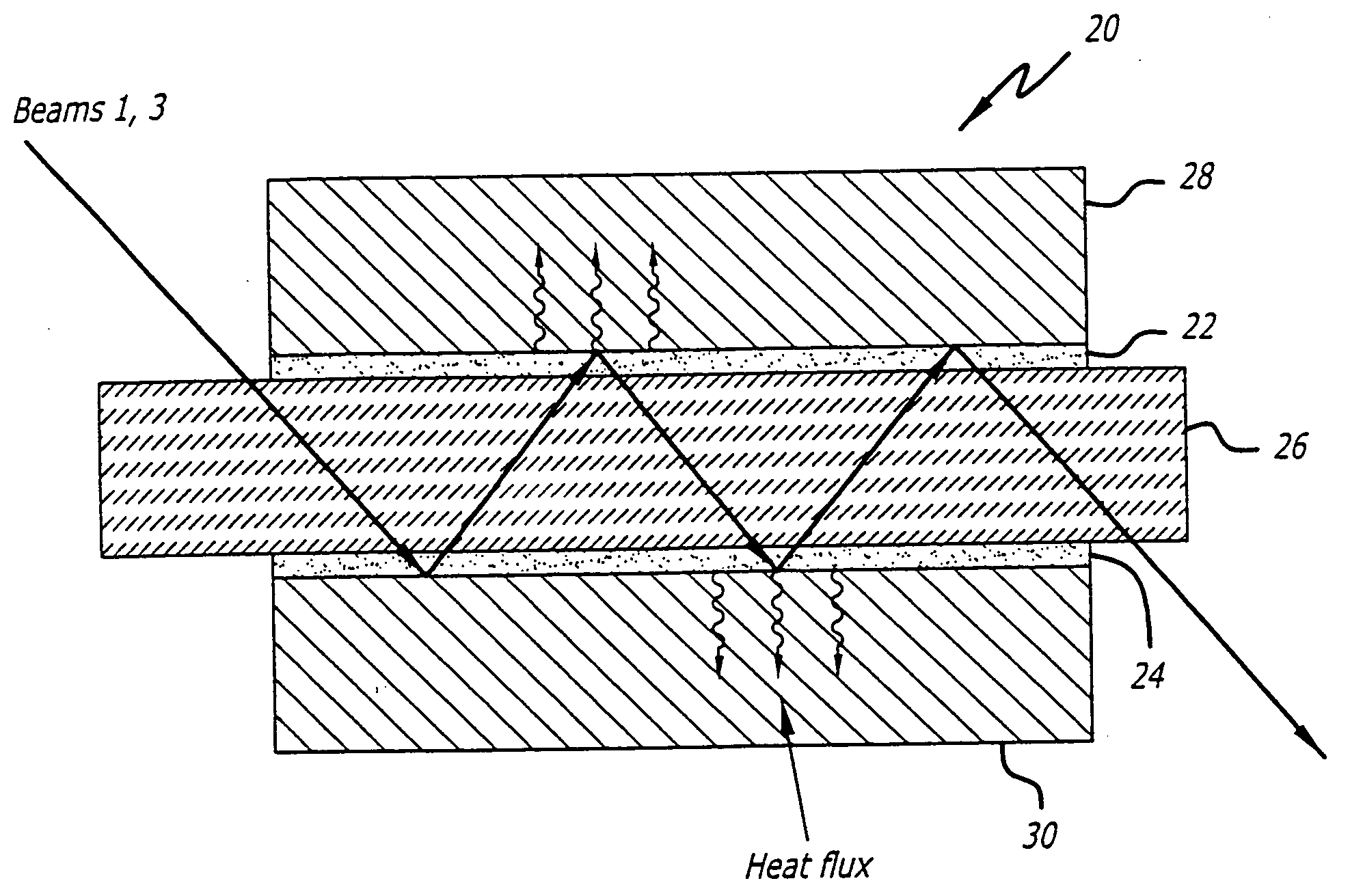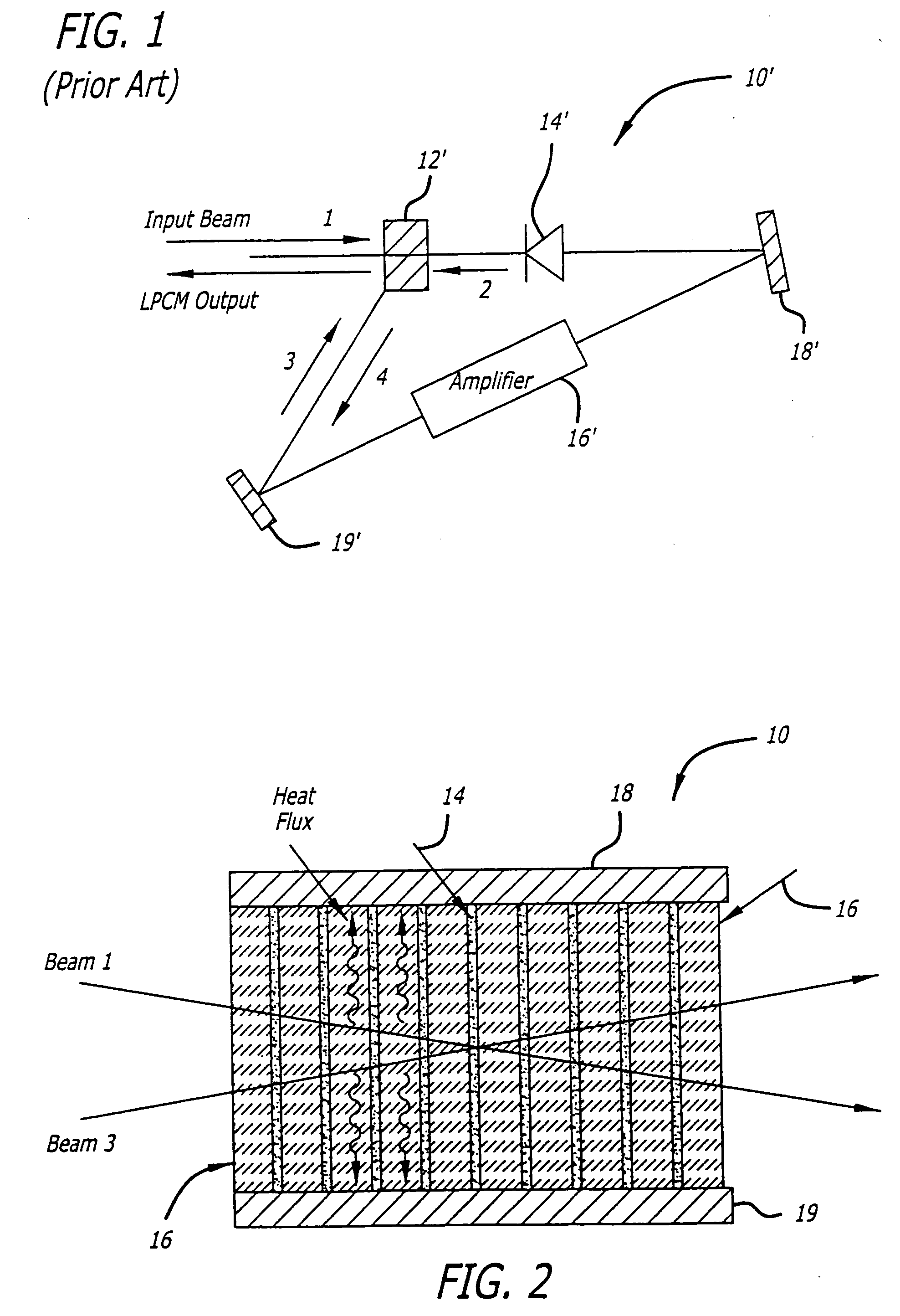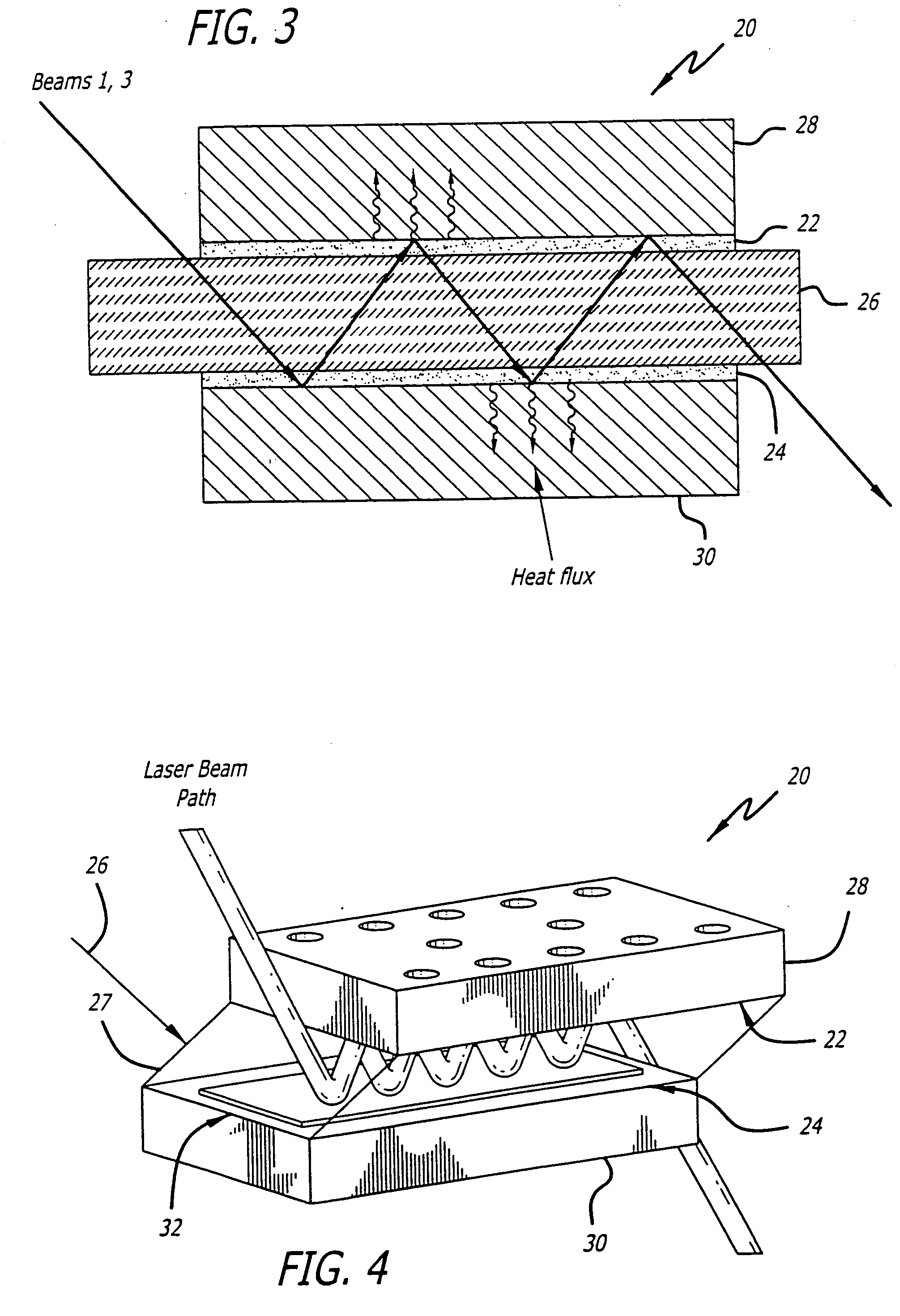Conductively cooled liquid thermal nonlinearity cell for phase conjugation and method
a liquid thermal nonlinearity and phase conjugation technology, applied in the field of lasers, can solve the problems of difficult four-wave mixing of phase conjugation, difficult to achieve phase conjugation, and fewer options
- Summary
- Abstract
- Description
- Claims
- Application Information
AI Technical Summary
Benefits of technology
Problems solved by technology
Method used
Image
Examples
Embodiment Construction
[0019] Illustrative embodiments and exemplary applications will now be described with reference to the accompanying drawings to disclose the advantageous teachings of the present invention.
[0020] While the present invention is described herein with reference to illustrative embodiments for particular applications, it should be understood that the invention is not limited thereto. Those having ordinary skill in the art and access to the teachings provided herein will recognize additional modifications, applications, and embodiments within the scope thereof and additional fields in which the present invention would be of significant utility.
[0021]FIG. 1 is an optical schematic of a loop phase conjugate mirror (LPCM) scheme that uses a liquid thermal nonlinearity cell in a four-wave mixing (FWM) configuration to create a holographic mirror in accordance with conventional teachings. The system 10′ includes a cell 12′ containing a liquid nonlinear medium, a Faraday isolator 14, an ampl...
PUM
| Property | Measurement | Unit |
|---|---|---|
| maximum temperature | aaaaa | aaaaa |
| energy | aaaaa | aaaaa |
| angle | aaaaa | aaaaa |
Abstract
Description
Claims
Application Information
 Login to View More
Login to View More - R&D Engineer
- R&D Manager
- IP Professional
- Industry Leading Data Capabilities
- Powerful AI technology
- Patent DNA Extraction
Browse by: Latest US Patents, China's latest patents, Technical Efficacy Thesaurus, Application Domain, Technology Topic, Popular Technical Reports.
© 2024 PatSnap. All rights reserved.Legal|Privacy policy|Modern Slavery Act Transparency Statement|Sitemap|About US| Contact US: help@patsnap.com










